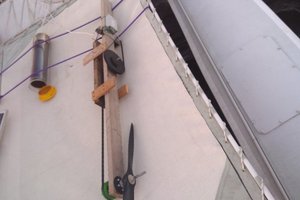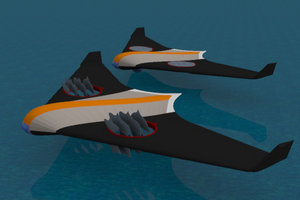In order to power the vehicle, the required voltage can be obtained from the Photo Voltaic Module. But it is expensive and a large number of panels are required to produce this voltage. So to make economic and usable in a vehicle, power converters are used and batteries are charged with the limited number of solar panels. A Boost converter along with voltage regulator can be used to meet the power requirement of the Brushless DC motor that in turn rotates the wheels of the vehicle.
The drive is rear wheel single shaft chain coupled drive. The power rating is 1.5KW and the peak torque required is 18Nm. However the torque required to run the vehicle from 0-20 Km/hr with acceleration of 1.1m/s2 is 86.15Nm. So we use a 1:6 sprocket ratio to attain a maximum of 108Nm.For the operation 4 batteries are used, each has capacity of 12 Volts and 30 Ah. These batteries are connected in series so that a total of 48 Volts and 30 Ah is available. The batteries are charged by the solar panel. To avoid overcharging a relay is used.
To further reduce the use of Number of solar panels and to meet the voltage requirements a dynamo can be charged and used for additional power supply.
The Monitoring System consists of various sensors interfaced by Spark Photon Microcontrollers with an inbuilt Wifi Module. The temperature of the battery is monitored by LM-35 Temperature Sensor, speed is measured using IR sensors, The Finger tip pulse sensor – MLX90614 gives the driver pulse rate. A Doppler radar can be used to measure the proximity of approaching vehicles.
The Coding for safety parameters are programmed in the Photon IDE.
The simulation can be done and the output can be viewed on an app as in thus enabling a monitoring system to track the various parameters for future references.
Motor Selection - Calculation
The torque required by the motor was decided based on the following calculations:
Tractive force = Total resistive force + ma
Ft = Fr + Fad + αma
Where Fr is the rolling resistance
Fad is the aerodynamic drag
α is the coefficient of rotational inertia (1.1)
Aerodynamic drag=0.5*density*cd *v2*A
Frontal Area of the vehicle=0.25 m2
Density=1.2 kg/m3
Cd =0.8
Fad=2.08 N
Mass of the vehicle=280 kg (including driver)
Rolling resistance (Fr) = c0 *w
The rolling coefficient of car tyre on concrete road is .013
Fr= 0.013*280*9.81
= 35.7084 N
Assuming that the vehicle accelerates from 0-20 km/h in 4 seconds the acceleration a=1.1 m/s
Ft = 280*1.1 + 35.7084+2.08
= 345.8 N
The wheel radius is 0.25 m
The torque required at the wheels= Ft * r
=345.8*0.2469
= 86.45 Nm
Total torque required in the rear wheels would be 86.45Nm
Maximum Tractive Effort=µR=.8*280*9.81
Fmax=2197.44 N
Tmax=550 Nm
Therefore no slip will occur
Power of the motor = F*v
P = 345.8*4.2
= 1449.5 W
So a motor of 1.5 kW was selected
Emergency Shut down
It is yet another safety feature to ensure that the adverse conditions such as fuel leakage break failure, motor failure etc are taken care to maintain the control over the vehicle. For this purpose Kill Switch is provided at the different places like dashboard, near the seat and at the front of the vehicle. On pressing the switch the electronic breaks are applied and the entire system is brought to halt and it is shut down. From Figure-7 the NC (normally closed) switches are used for Emergency Shutdown of vehicle.
 vignesh95
vignesh95



 sean d'epagnier
sean d'epagnier
 ken.do
ken.do
 Justin Scott
Justin Scott
IDLY saapteengala?